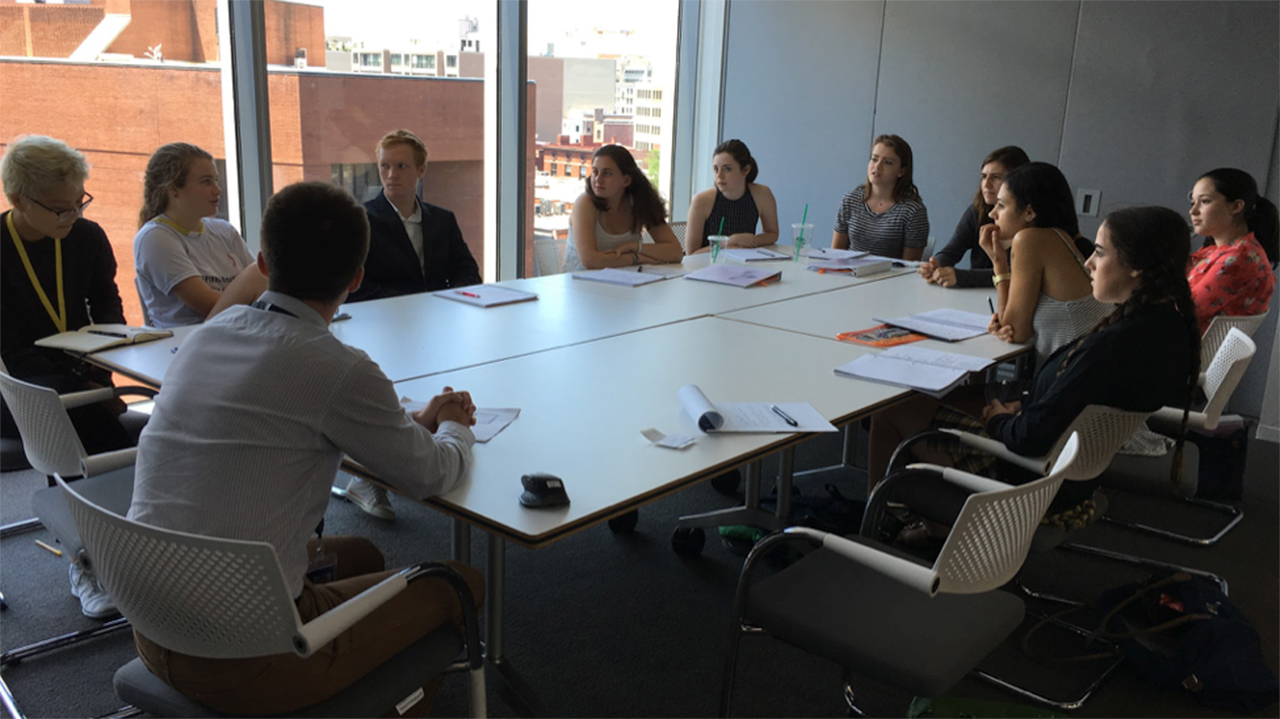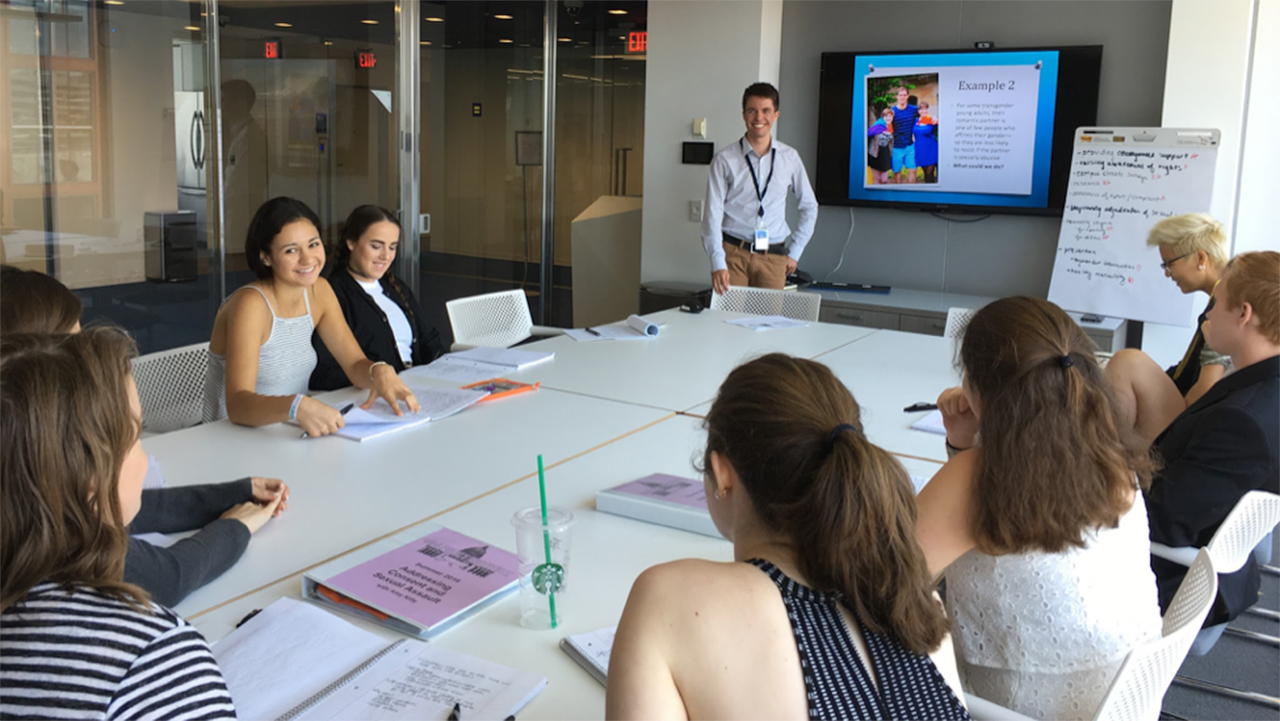Today we went to one of the largest civil rights organizations in America, the Human Rights Campaign (HRC), to discuss sexual violence among the LGBTQ community. We met with Gabe Murchinson, a public health researcher, former sexual violence prevention peer educator, and senior Research Manager at HRC. We began our discussion by talking about different types of prevention when it comes to sexual violence, focusing mainly on perpetrator and bystander intervention. We then discussed how those methods differ from culture change prevention, and gained a deeper understanding of how you really have to work with everyone in a community and pay attention to situations that aren’t just focused on sexual violence in order to develop an efficient culture change strategy. We learned that their goal isn’t focused solely on changing perpetrator’s attitudes, but rather engaging everyone else in the issue and reducing related problems like pressure and disrespect.
We were then introduced to the CCE Model (communication and consent educators), and learned that they represent diverse campus communities by involving people from all different social aspects. By doing this, students are able to identify problems within their own social groups, and come up with concrete solutions towards these issues. One interesting topic from our conversation was that there are higher rates of sexual violence occurring within transgender communities than the LGBTQ communities. We learned that a reason for this statistic is that for some young transgender adults, their romantic partner is one of the few people who affirm their gender, which therefore makes them less likely to resist if their partner is sexually abusive. Approaching this issue, we learned that we can help transgender survivors by creating a more supportive community, advertising safe space events, and hosting more social events that include “breaking the ice” activities such as pie-baking or fun games.
In conclusion, some major takeaways toward preventing sexual violence on campuses would be to incorporate earlier sex education, removing the stigma for reporting and healthy masculinity, and demolishing all gray areas. I strongly believe that it is important to keep these factors in mind, especially since sexual violence is less likely to occur if we change our cultural habits.




